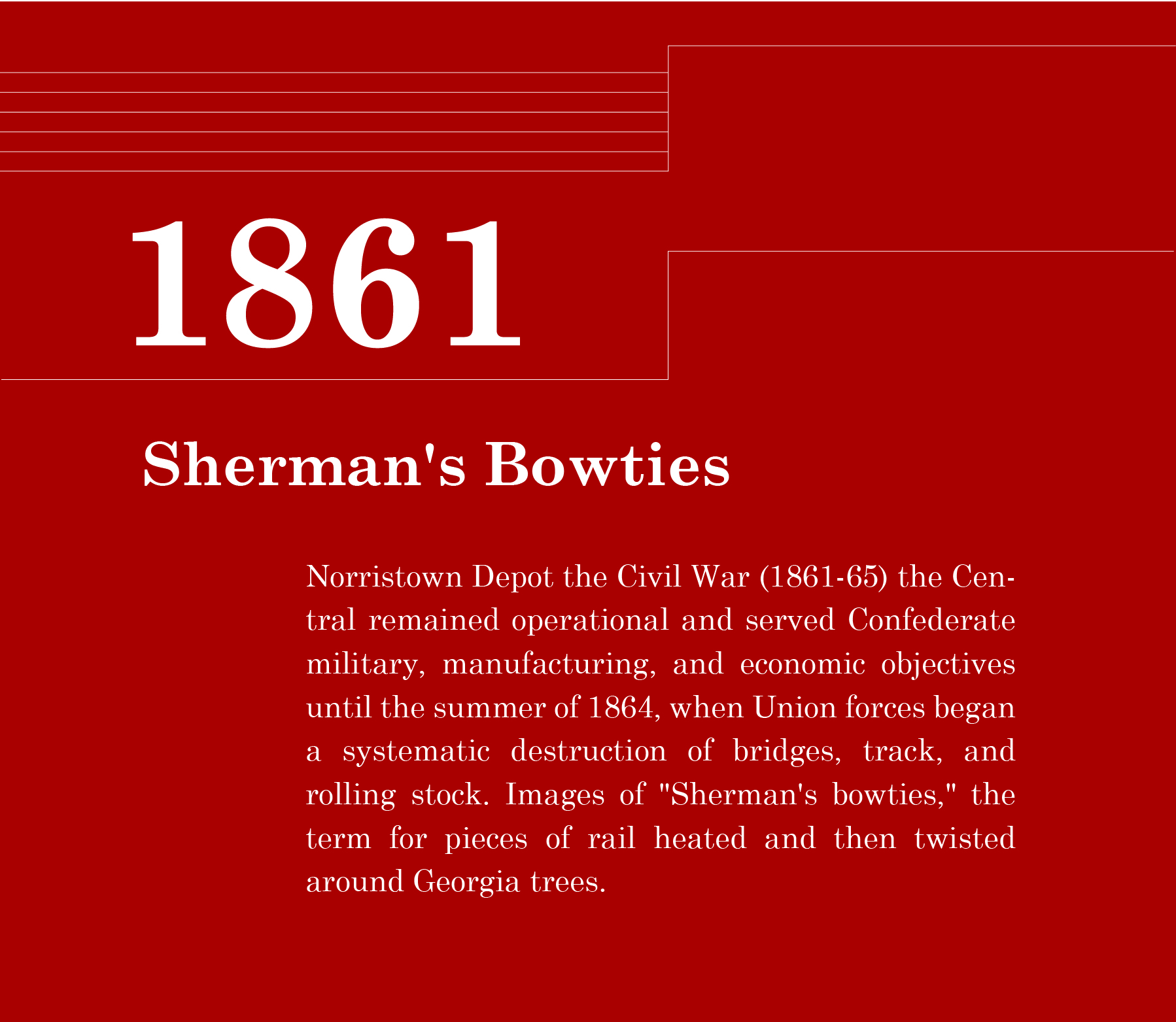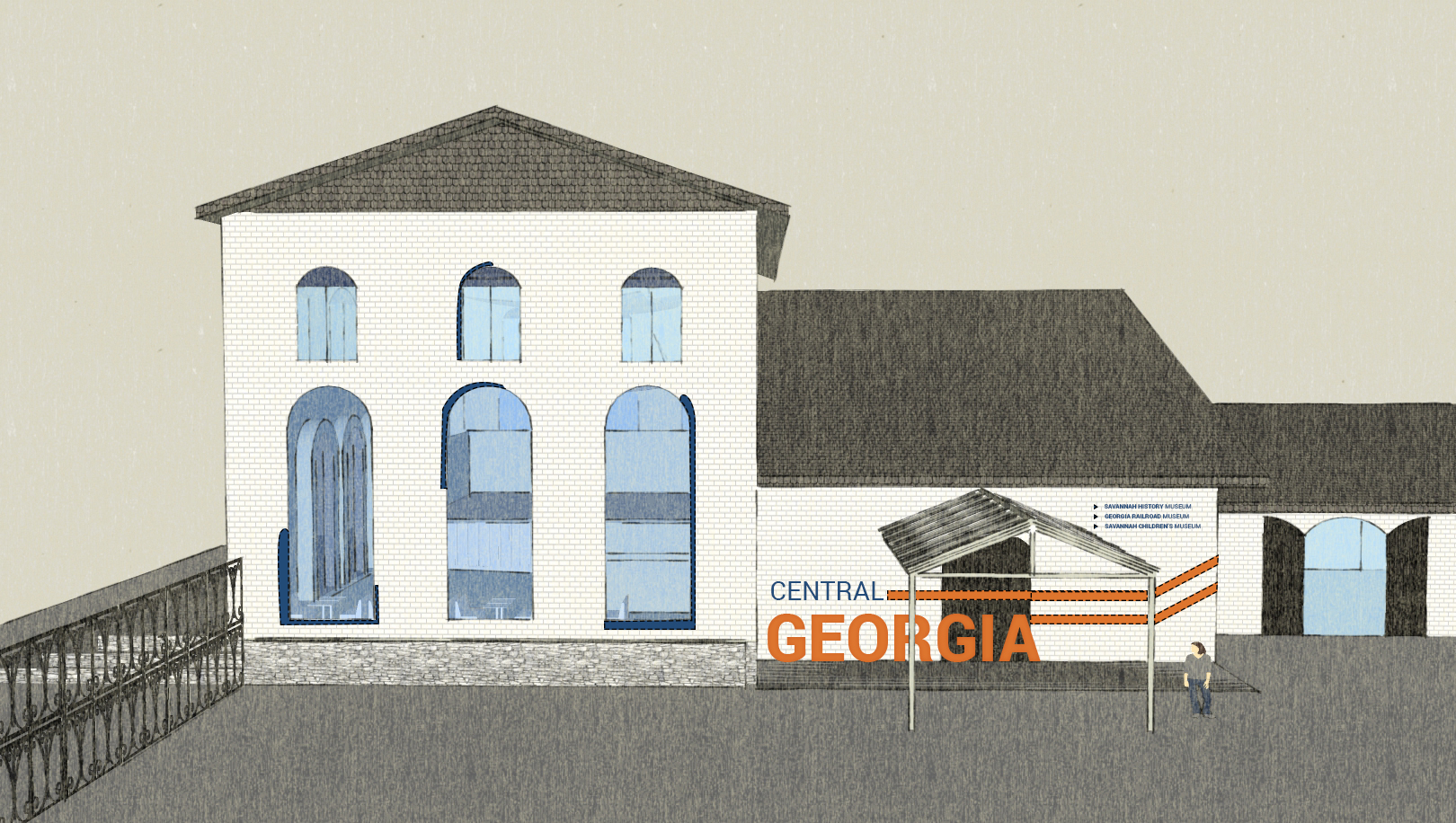
The Central of Georgia Experiential Design

Central of Georgia Physical Experience
My specific role in this project was to transform a physical space through the exploration of theoretical and practical applications of experience design. Aspects of experience design include addressing form, physical space and sensory response. The space that I chose is currently called Savannah Visitor’s Center/Tricentennial Park. It was formerly known as Central of Georgia Railway which was a passenger train station and train shed. This space currently connects four distinct places including: the Savannah Visitors Center, Savannah History Museum, Savannah Children’s Museum and Georgia State Railroad Museum. The major problem identified with the space currently is the lack of wayfinding and the disconnect between all major areas.

Final Floor Plan
My goal for this project was to create one space that carries clear messages from the museums such as history of the railroad, the history of Savannah and to meet the needs of visitors that want to learn more. The ultimate result was a space that is immersive, fosters discoverability and engages all of the senses.

Map of Location
As you walk inside the "Central of Georgia" you will become immersed in areas that explore the evolution of transportation in both land and water.
Contained Pieces of History
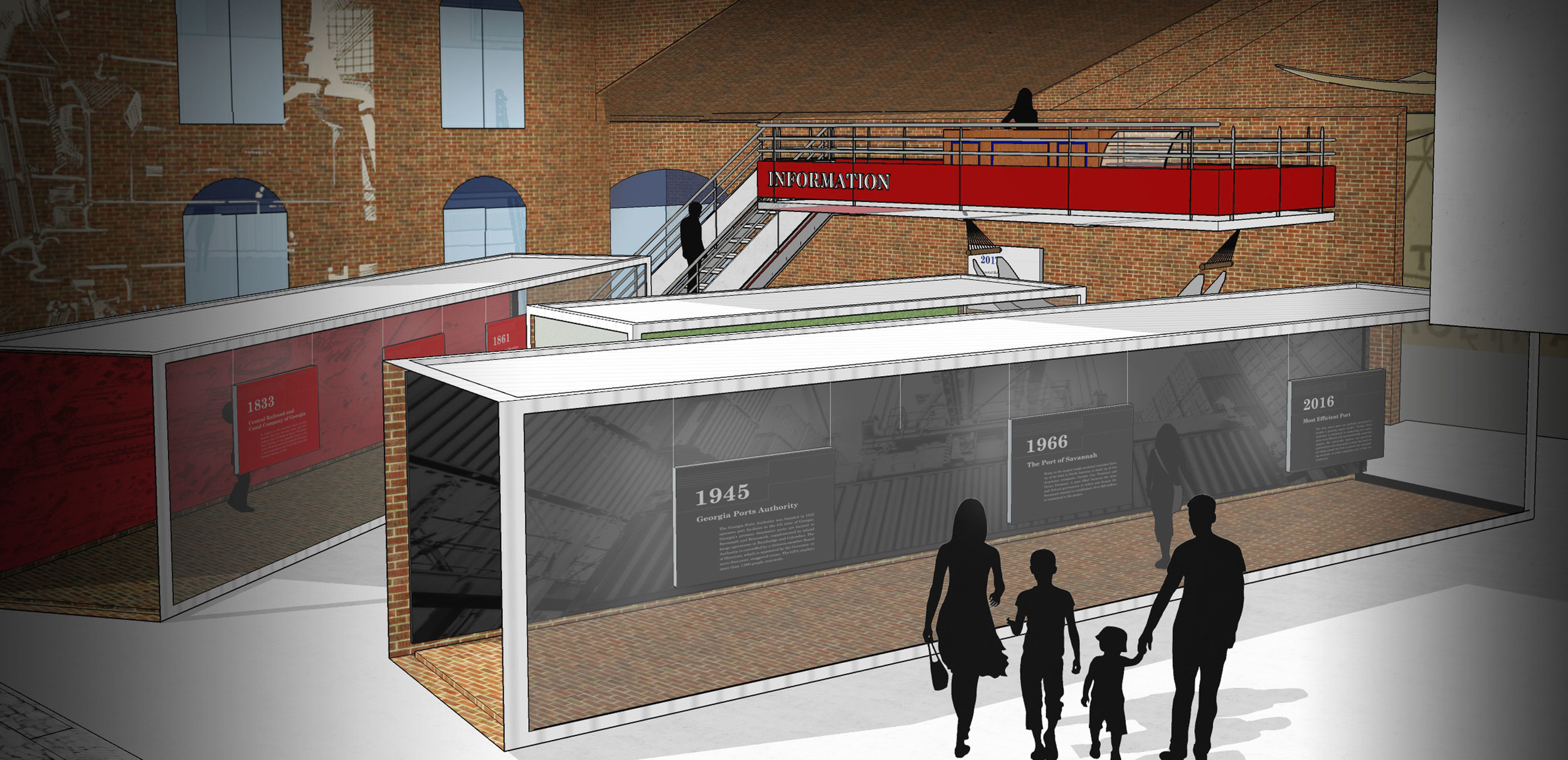
Interior
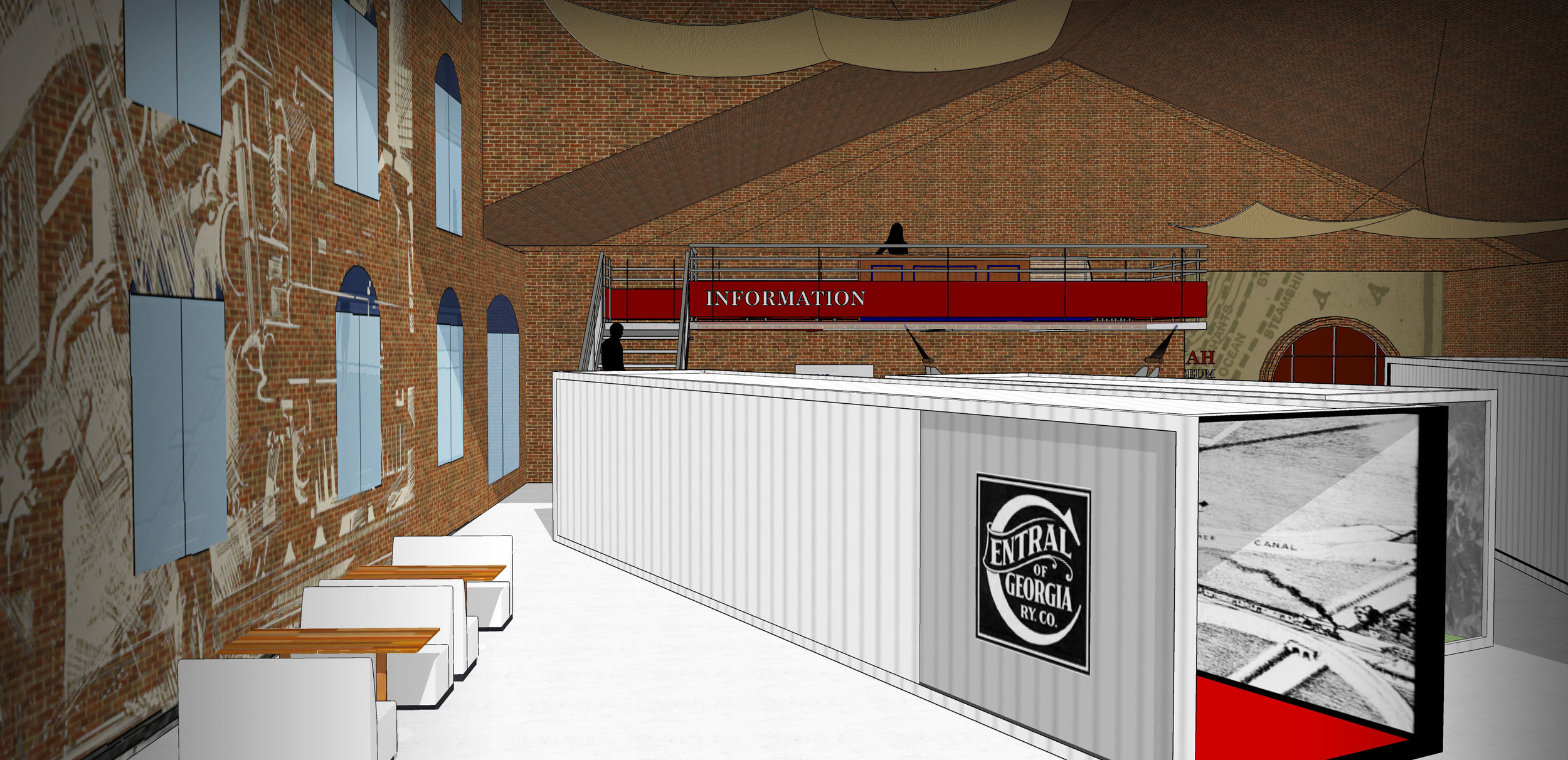
Central of Georgia Railway Exterior
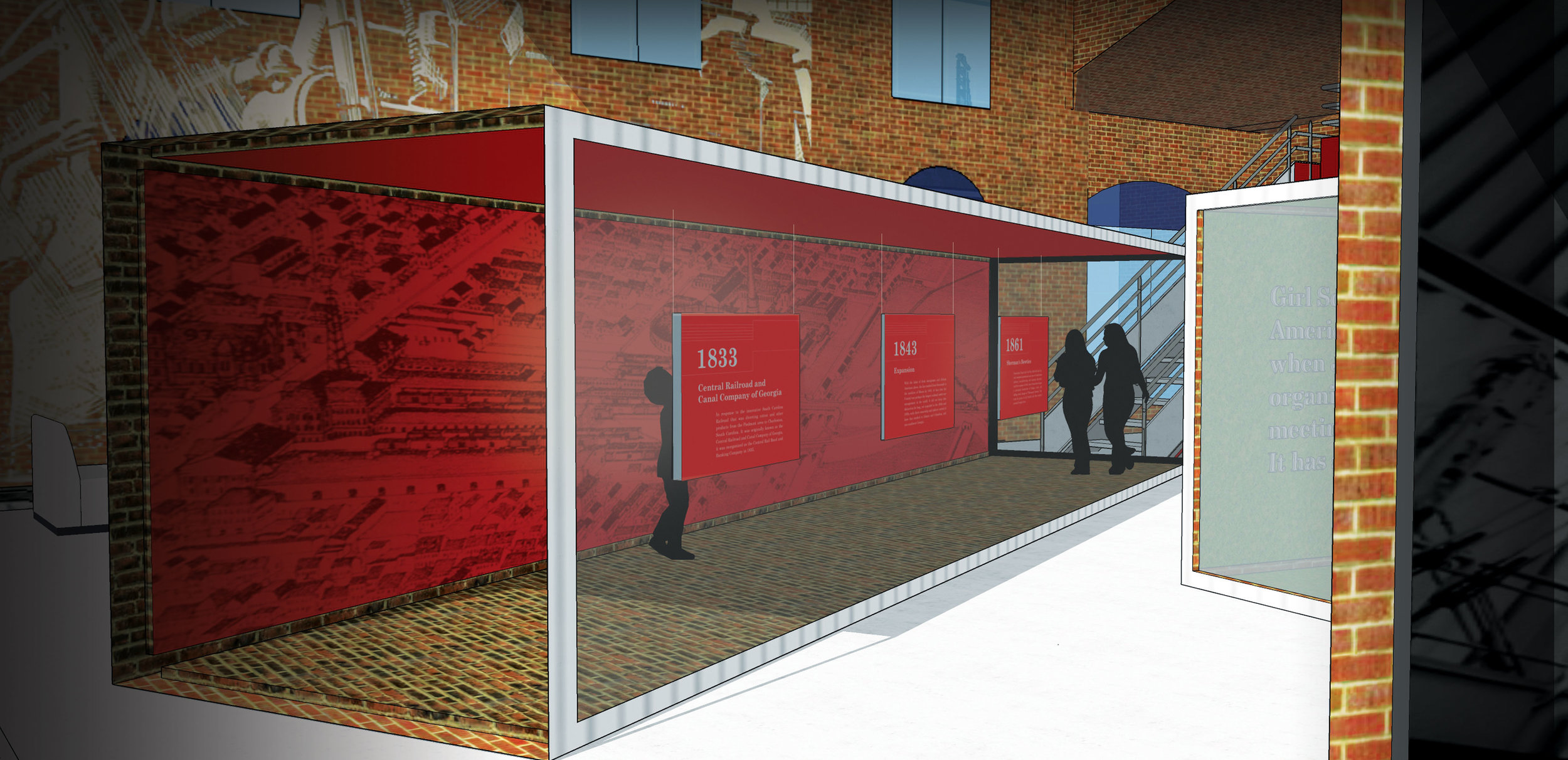
Central of Georgia History
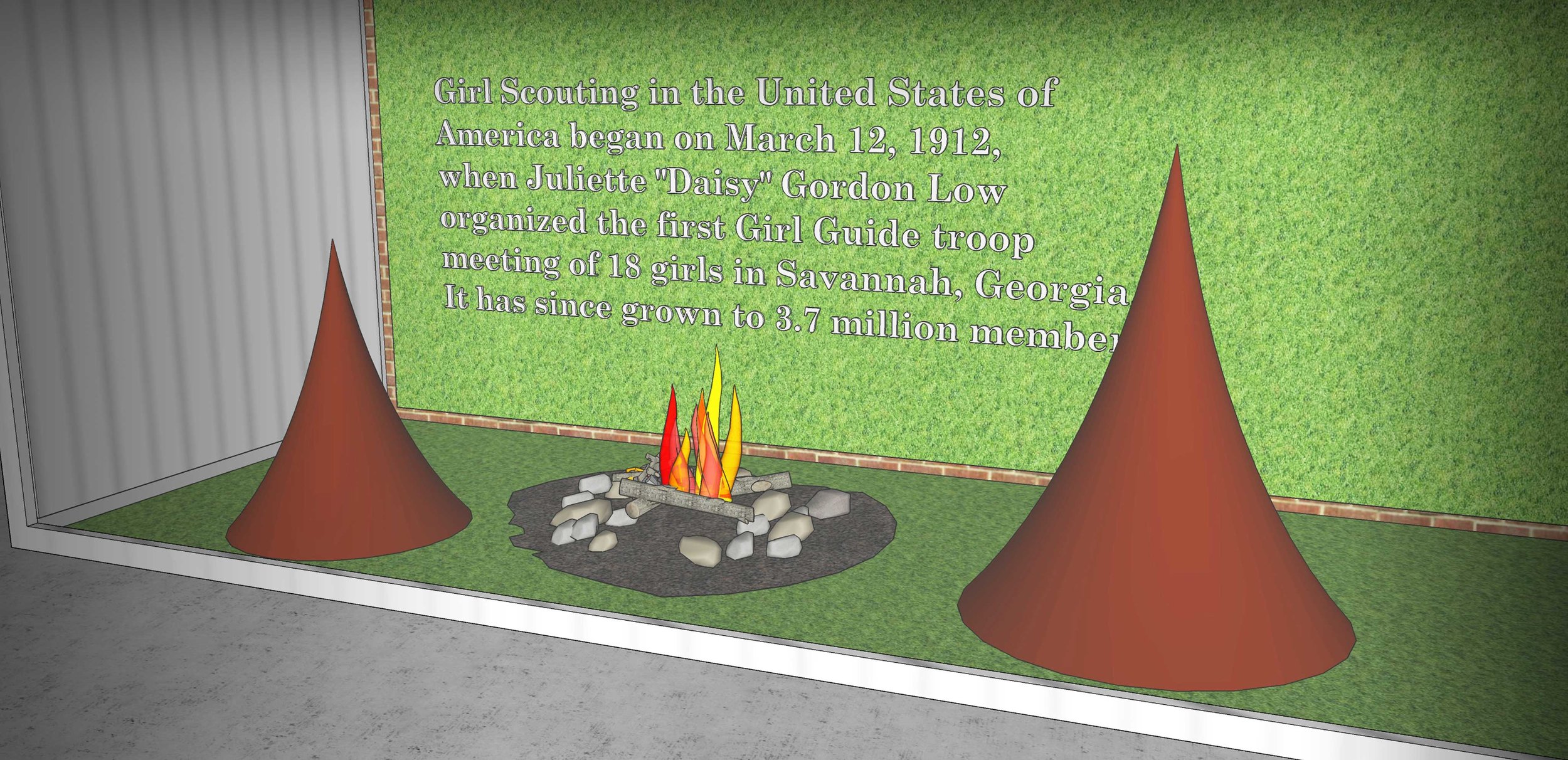
Juliette Gordon Low Girl Scouts
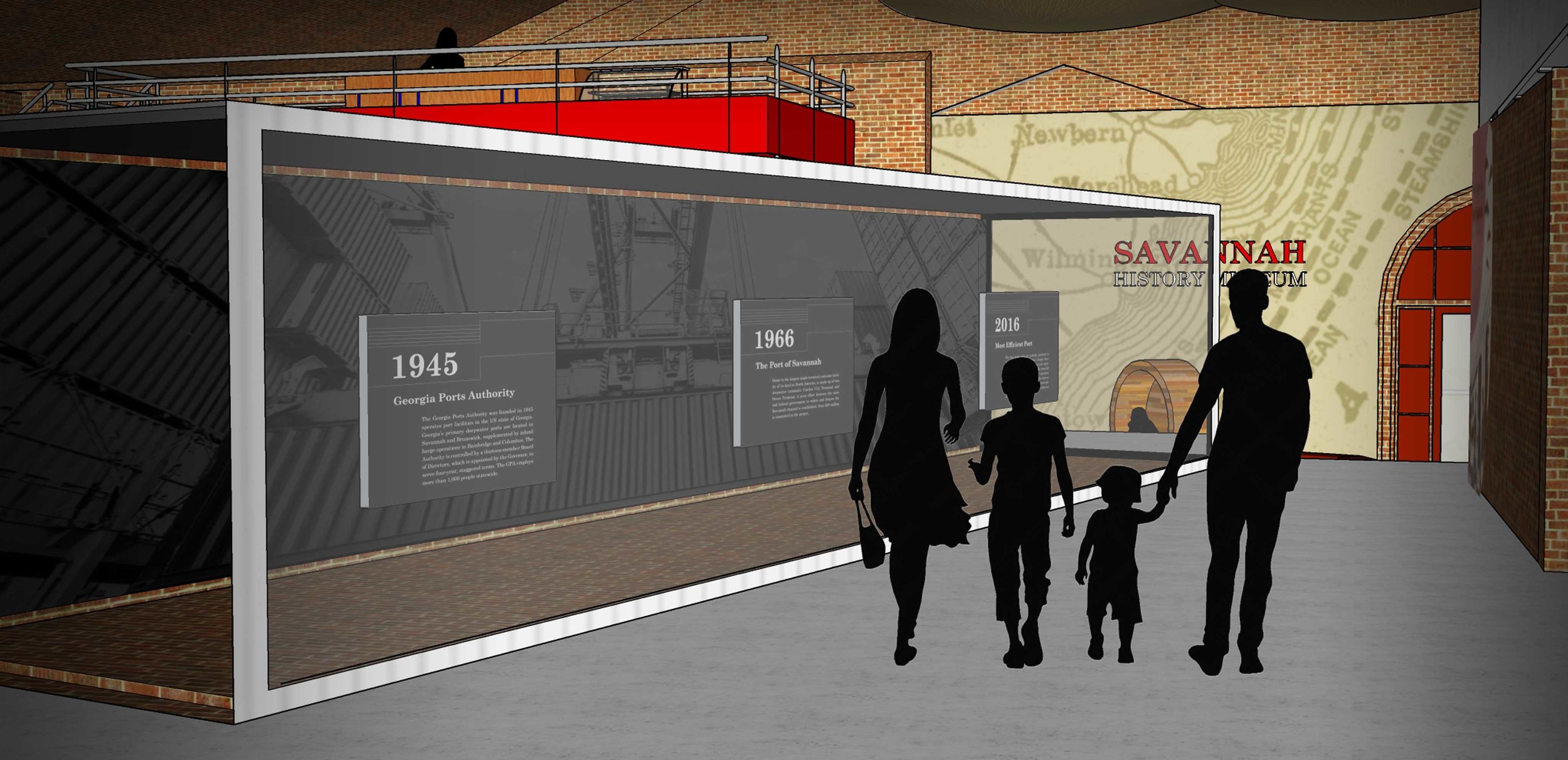
Georgia Ports Authority History
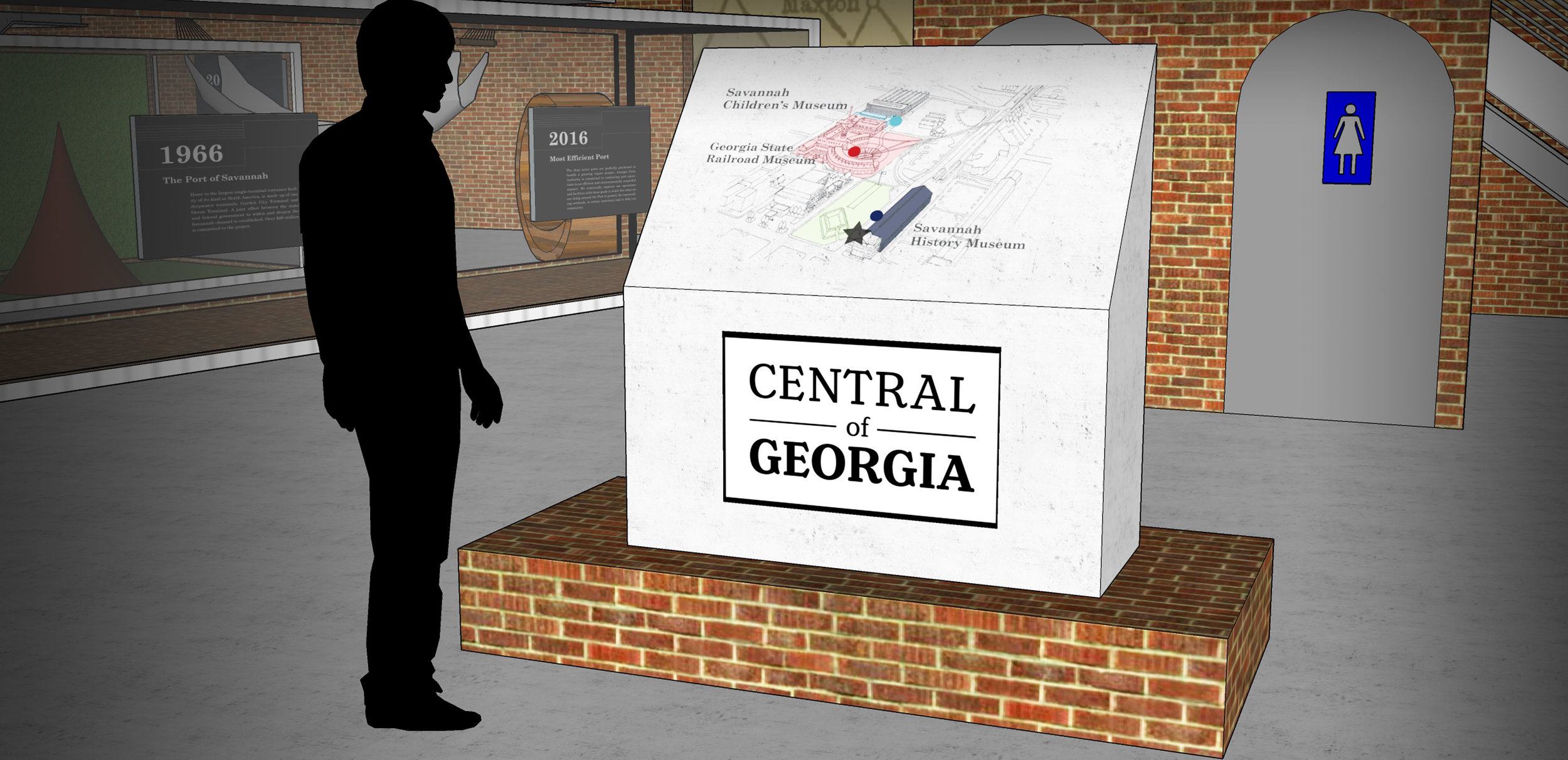
The map shows the 3 main locations
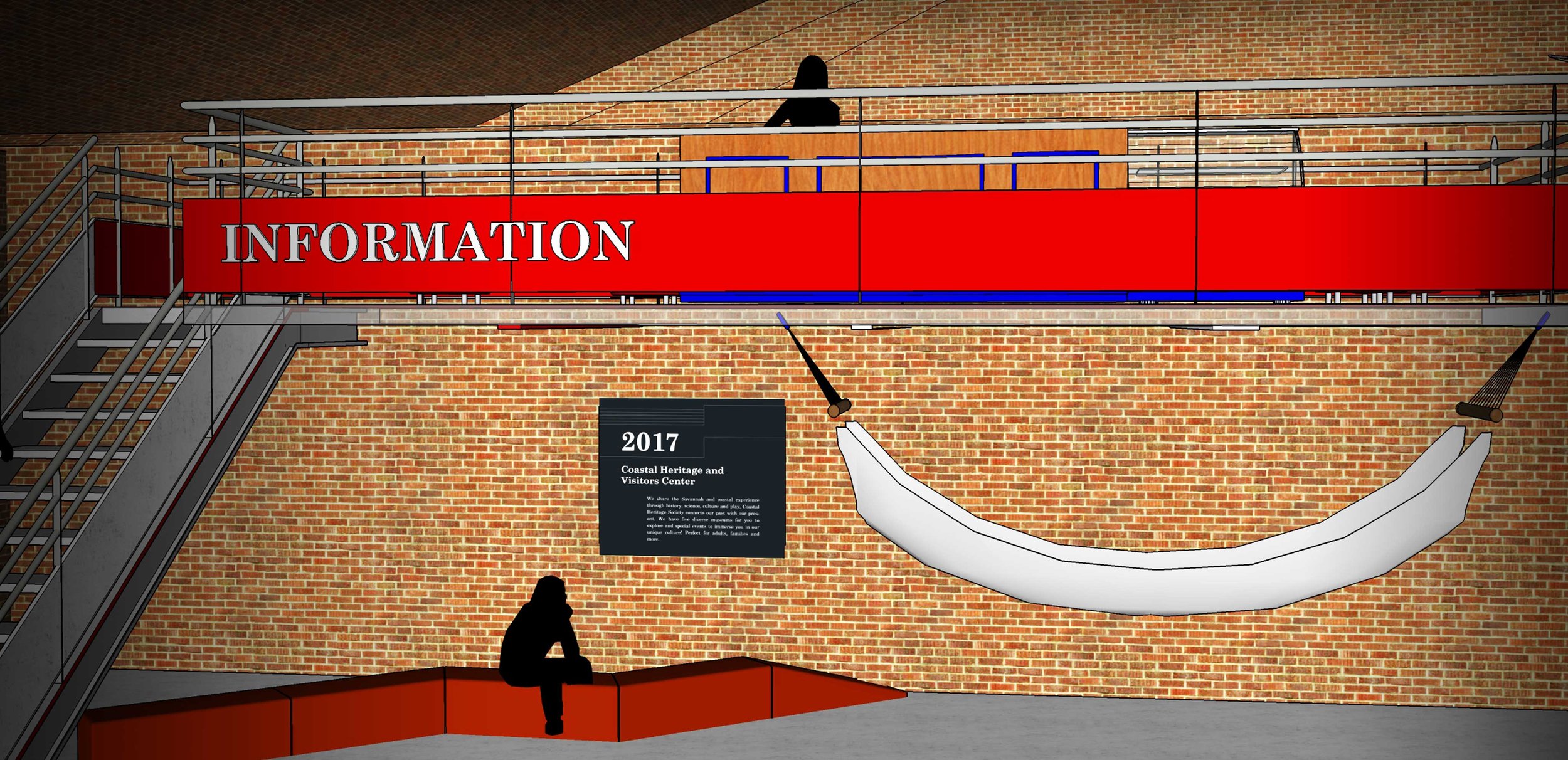
The upstairs area contains brochures and staff that can help tourists learn more about Savannah.
Importance of Savannah's Waterfront
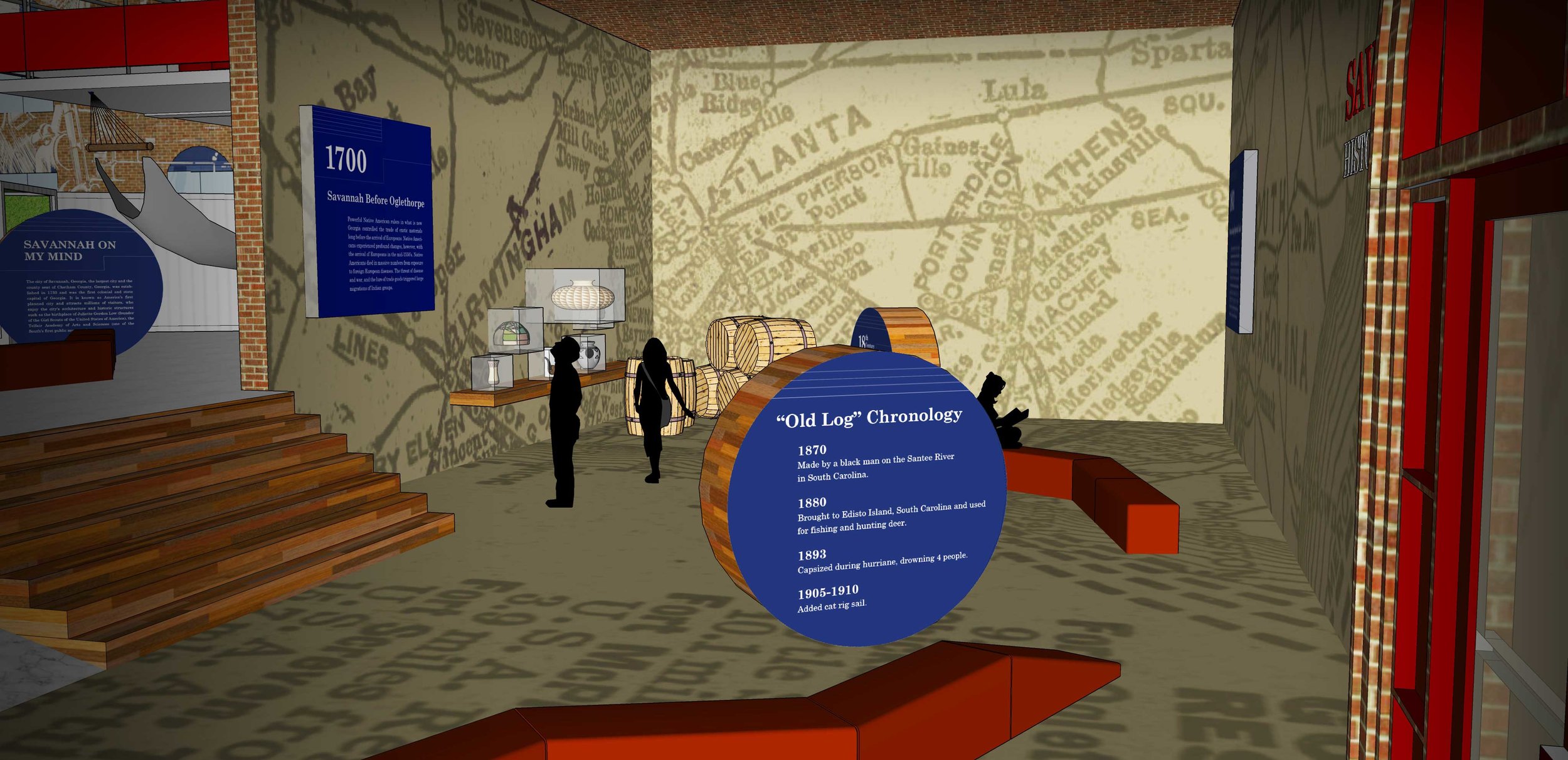
This space explores the history of the waterfront of Savannah
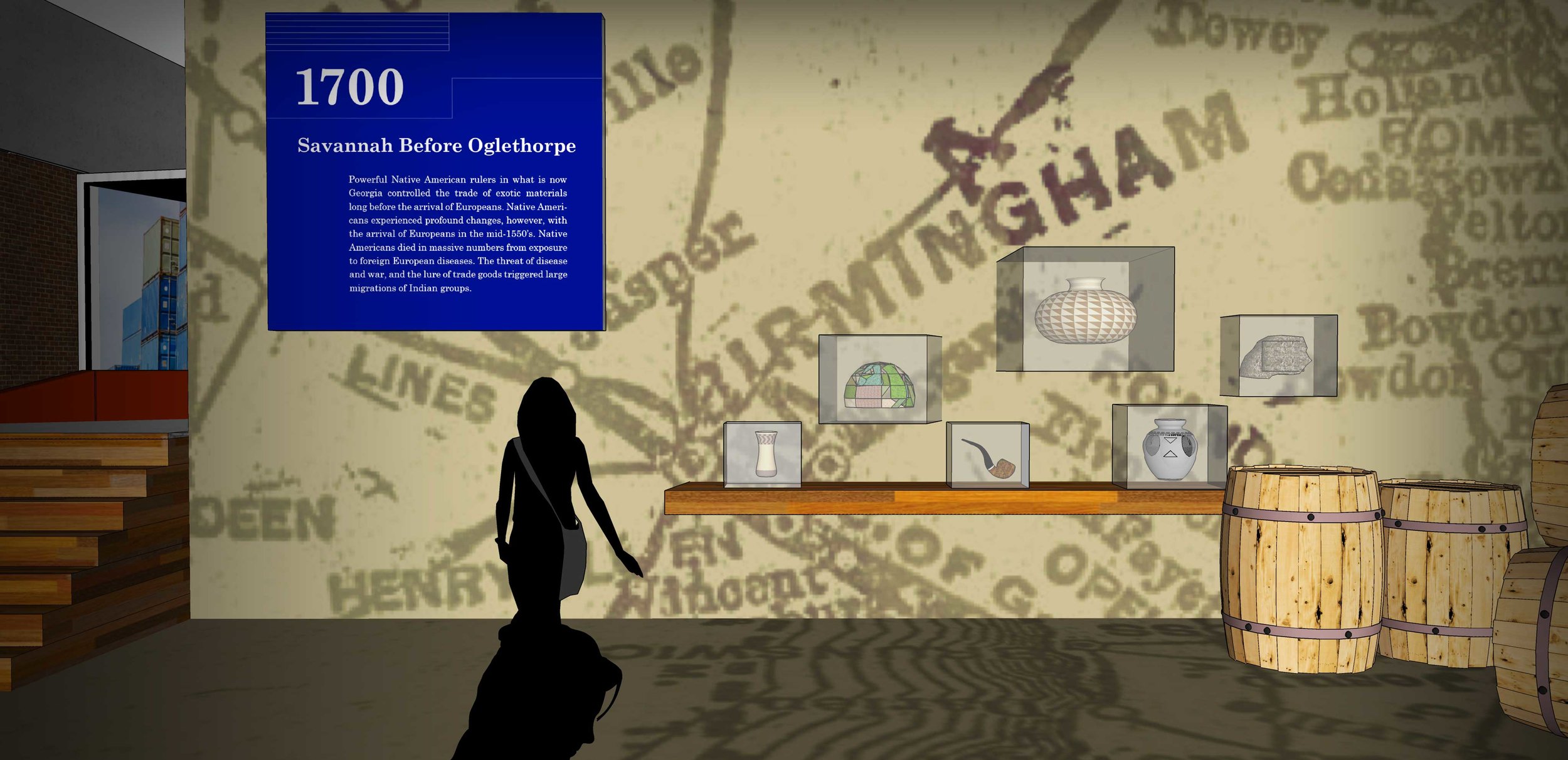
The space is a timeline that simultaneously acts as wayfinding. By going "back in time" the user is guided to the Savannah History Museum and beyond.
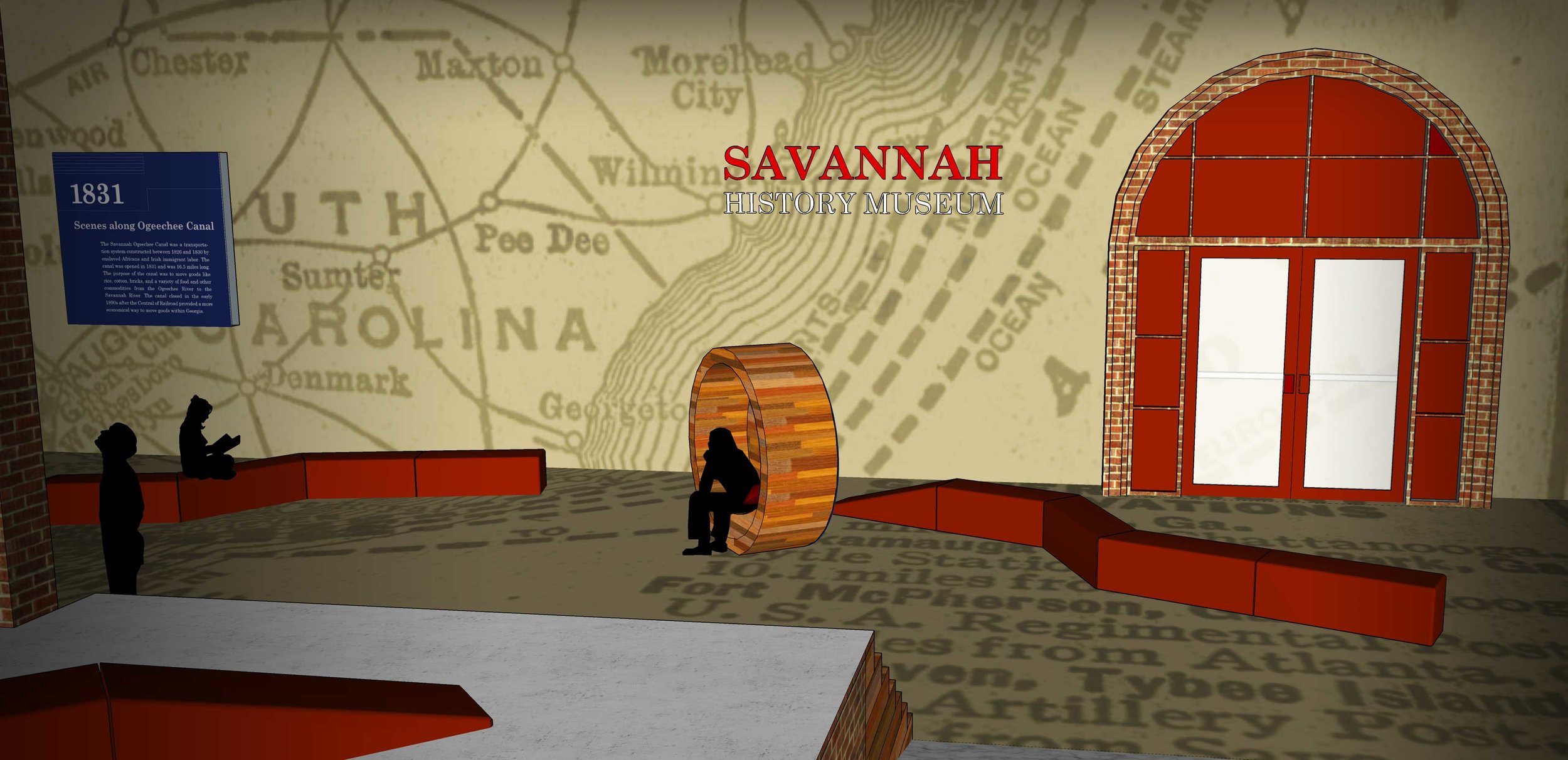
Inside these circular sitting areas are audible stories that talk about different aspects of the history of Savannah.
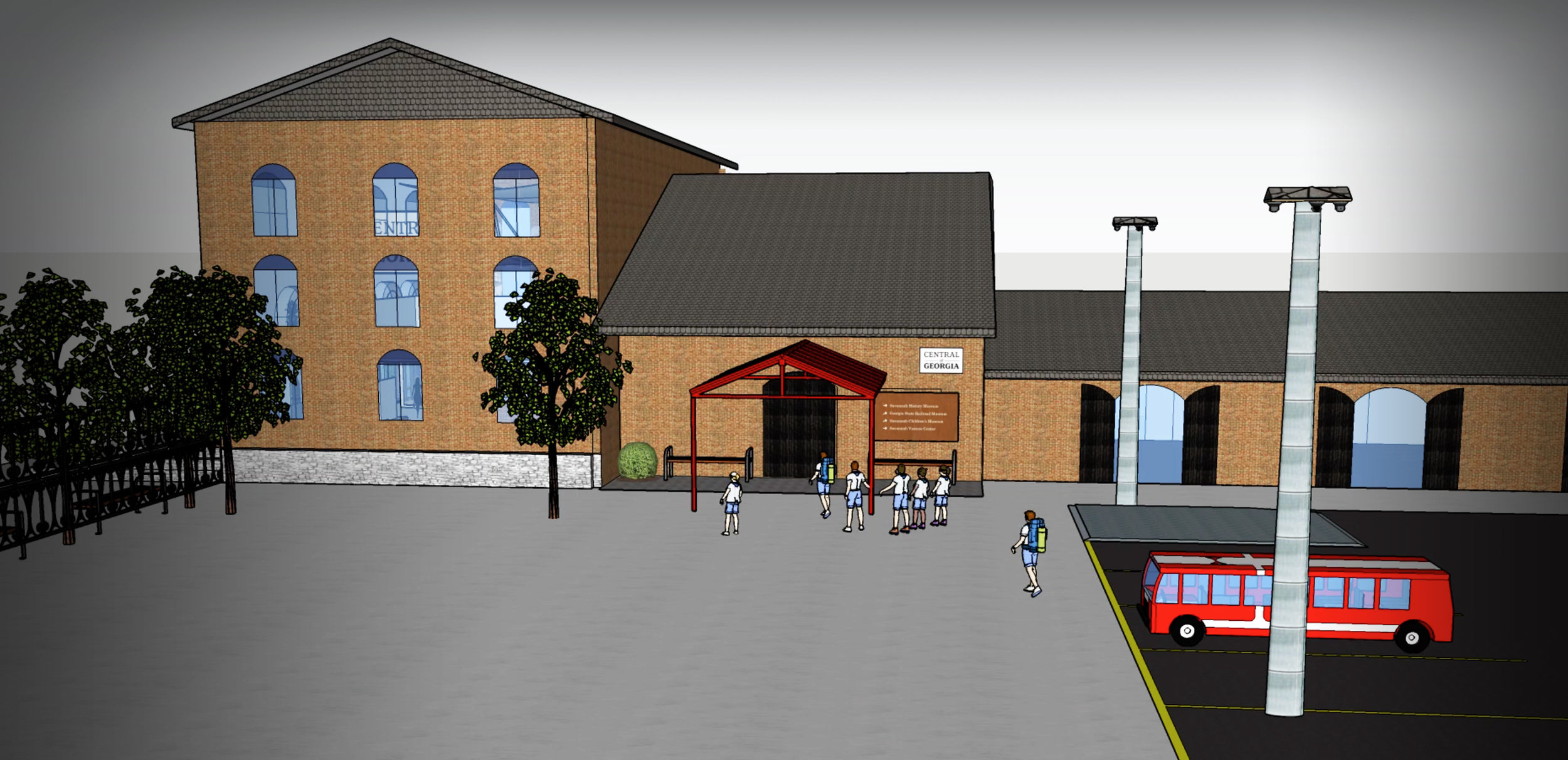
All images were created using Adobe Photoshop and SketchUp.
Materials
The main materials of the space were brick and wood. The same materials were kept for the redesign in order to maintain the existing language that represents Savannah.
Timeline as Wayfinding
The final wayfinding outcome reflected the evolution of land transportation taking you back in time to the Ogeechee Canal in Savannah, GA that then leads you back towards the Savannah History Museum. The ability to bring “hidden” stories to light in this space was another goal of this space. Pieces of history that are shown extensively in each museum were utilized as “visual snippets” and teasers to show the users what they will be able to experience if they visit each museum and learn more.
Design Research as Key Component
Contextual research, ideation, prototyping and design compose my areas of expertise that guided the final outcome of this project. I took the existing floor plan of the space and reconstructed an experience to leverage the existing themes the make Savannah a historical and contemporary place of influence. Extensive contextual research of the Savannah Visitor’s Center/Tricentennial Park took place in order to develop an experiential design for this physical space. The first step was identifying a genuine need. Primary information was gathered through historical archives of floorpans, observation of traffic flow inside the space, observing external and internal spaces in Savannah, GA of historical importance and interviewing employees and supervisors. Personas were created based on the research findings and insights.
Initial Explorations
Overall Feedback
The overall feedback from professor and peers was positive and constructive. They commented that the user journeys proposed, adequately resonated with the personas. They also responded to my “less is more” approach when addressing Savannah’s extensive history. The main idea was not to show everything at once, but to guide the visitors through subtle and sensorial cues to appreciate the Value of Time. My aim was to make this space inclusive and show creative aspects of Savannah that are not shown in popular culture.




